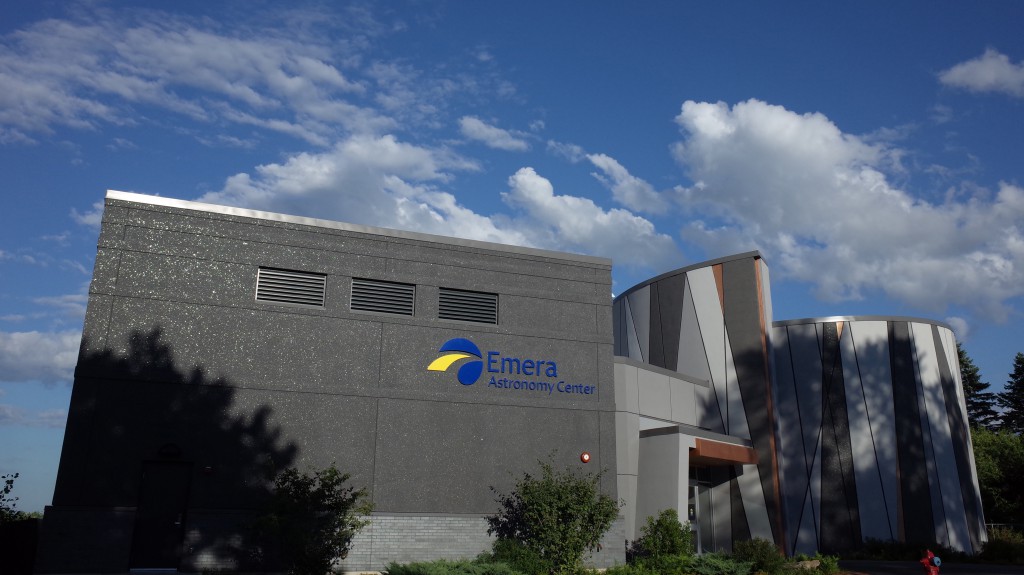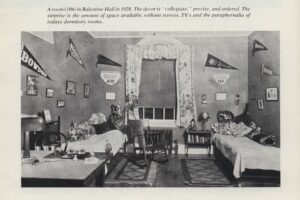On Sept. 1, the Emera Astronomy Center introduced a new science lecture series titled “Walking Among Giants” with Dr. Elizabeth McGrath. McGrath is currently the Clare Boothe Luce Assistant Professor of Physics and Astronomy at Colby College, and she’s a leader of CANDELS, which is a survey being conducted on the Hubble Space Telescope. McGrath is also working to define science goals for the planned Thirty Meter Telescope which will be installed on Mauna Kea, Hawaii, according to the Emera Astronomy Center website. This particular lecture discussed her observatory work dealing with the Hubble Region, a project that has been ongoing over the past three years.
Some of the topics that were covered included the three ingredients to making a galaxy, Newtonian Law and dark matter halos. She presented a slideshow of her work and a few of the algorithms discussed by some of the popular historical figures in the field (Newton, Einstein and Hubble) to which her work is based on. With the help of the center’s 4K resolution digital system, the most advanced in all of Maine according to the center’s director Shawn Laatsch, McGrath was also able to present the active formation of new stars along the edges of colliding galaxies, depict the aging of galaxies and the activity of dark matter and galaxy formation occurring within the universe. Through her simulations of glowing gas collections, the audience watched how galaxies formed, matured and were even able to experience certain ways in which galaxies die.
So what does it take to make a galaxy? From Thursday’s lecture, the takeaway is three key ingredients: dark matter, dark energy and plants/stars. One of the most surprising facts within the lecture is that the normal matter we understand, planets and stars, makes up about 5 percent of the universe, while the rest is made up of dark energy and dark matter that is yet to be fully understood.
Considering how long her study has been going on and how complex of a study it is, this form of teaching was very manageable. The full dome visualizations and simulations, paired with the step-by-step powerpoint, made the information both understandable and familiar to the audience. For example, McGrath introduced a simple experiment for each observer to do in order to get a better grasp on the concept of “Einstein Rings.” Einstein introduced the idea of light emitted from planets bending around other planets and objects creating a ring like effect. The same effect occurs when looking at a candle flame through an empty wine glass. The stem of the glass closest to the flame causes the light to be distorted, forming a golden ring on to be seen through your glass.
McGrath’s lecture is the first of many new additions to the Emera Astronomy Center this year. The facility’s director Shawn Laatsch is heading several new projects in the hopes of expanding the center’s use in order to incorporate fields of science outside of astronomy. Thursday’s lecture series serves as a glimpse into the potential future of the planetarium by showing how research can be in an immersive visual environment allowing complex information to be presented more easily and understandably to the general public.
Laatsch’s take on the planetarium’s functionality is simple. “Visualization can make a difference in both teaching and learning…It can also help to bring other sciences to the general public.”
Current planning is also underway to schedule regular classroom visits to the planetarium for classes in the mathematics, biology, chemistry and even forestry departments.
In the future Laatsch is hoping to be able to figure out ways to work with organizations such as the University of Maine’s Innovative Media Research and Commercialization Center and the university’s Virtual Environment and Multimodal Laboratory as well as students interested in animation in order to potentially create original productions.
Laatsch is hoping to switch the stereotypical view of a planetarium from that of a “star show” to a visualization theater. As a result, the center will be spanning a much larger range of material and the planetarium is already working with both the UMaine theater program and the Bangor Symphony Orchestra. Emera is hoping to present work from both groups over the course of this academic year.









